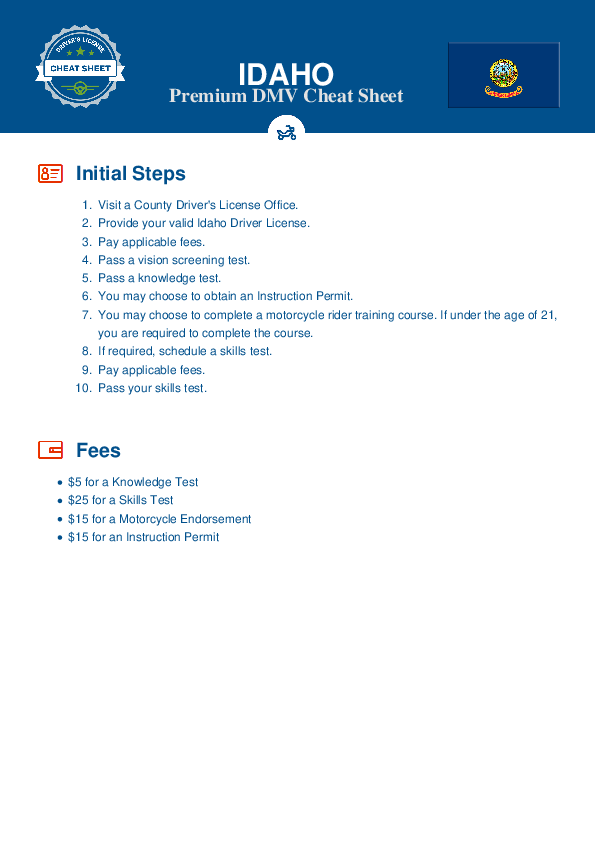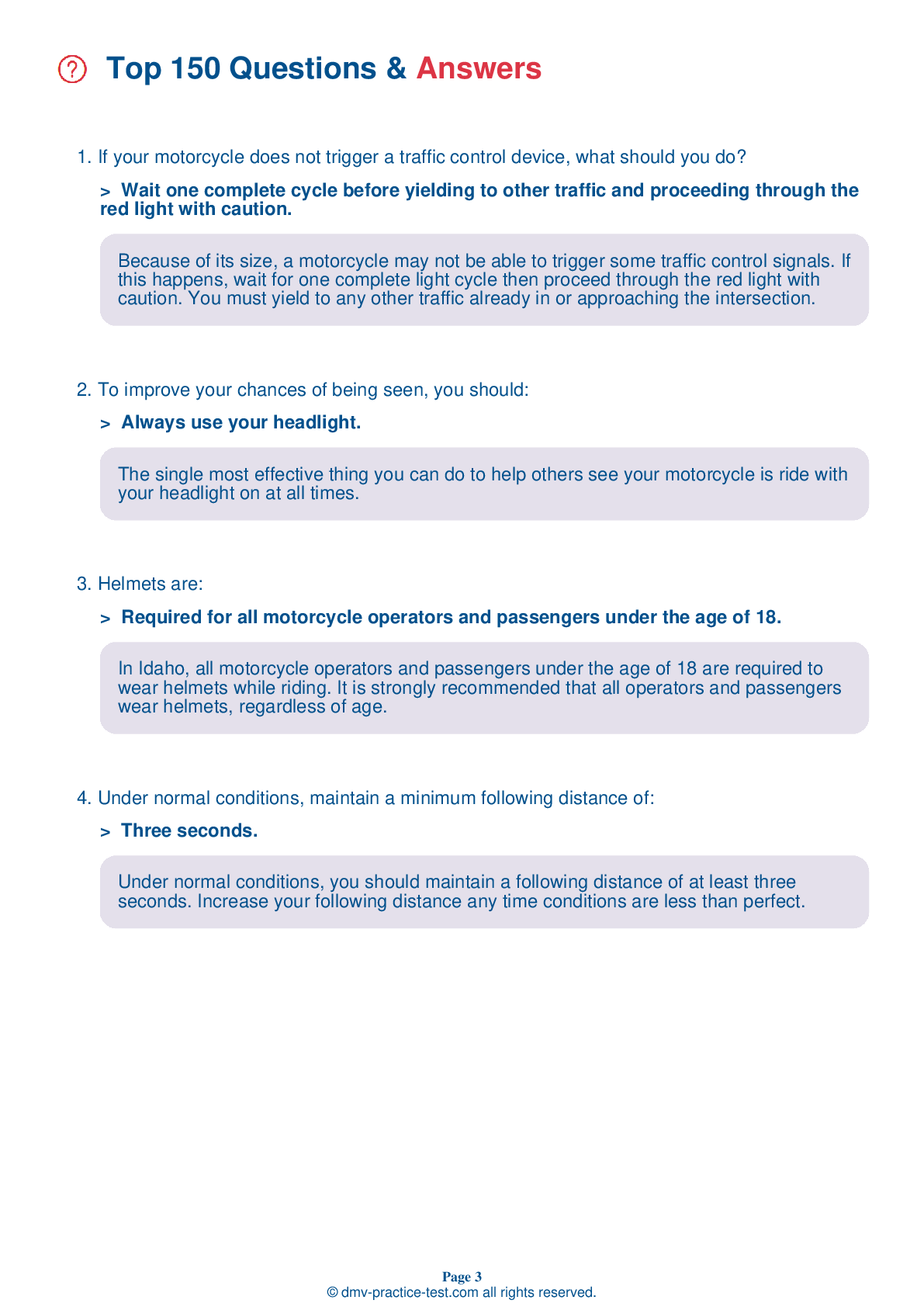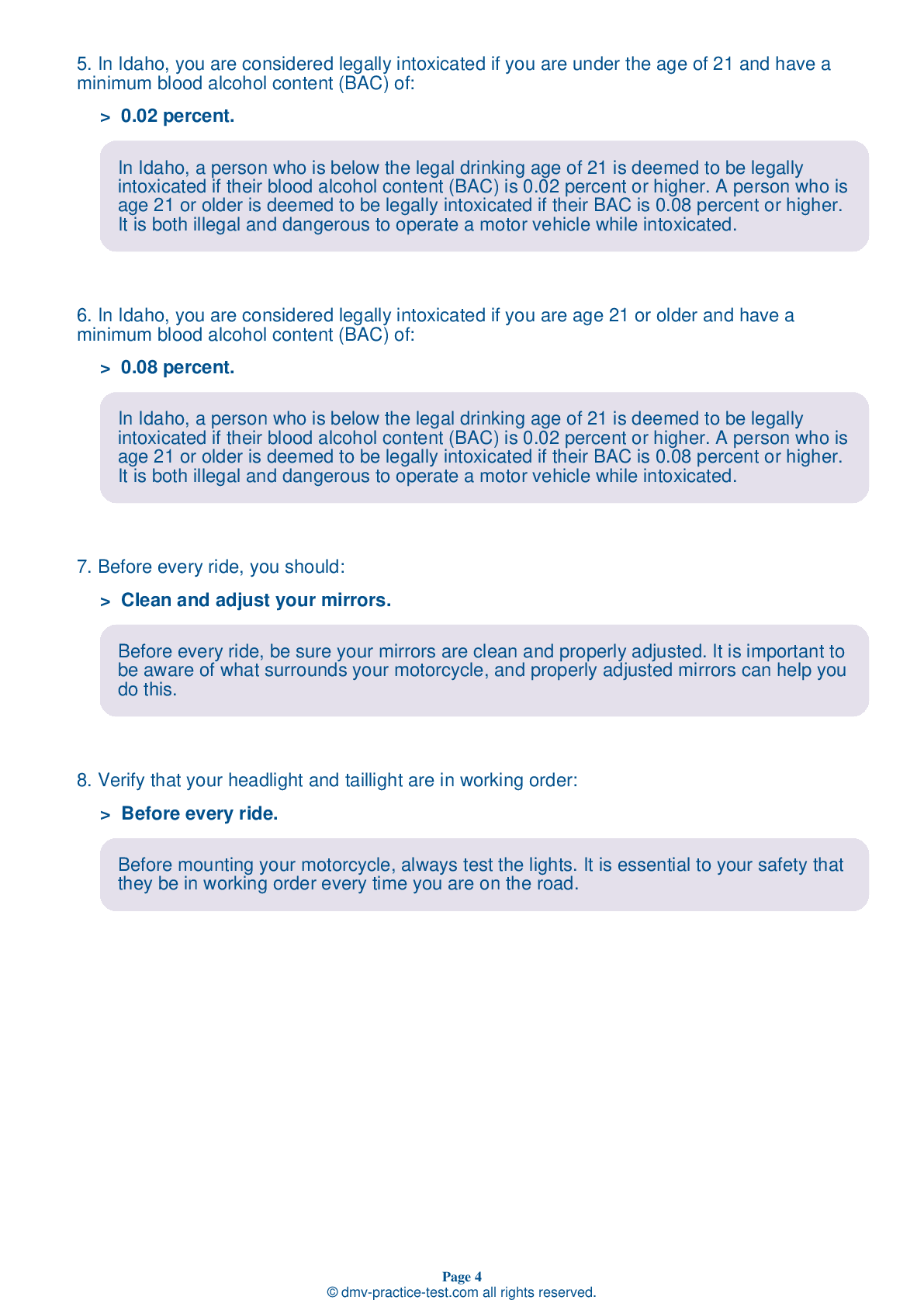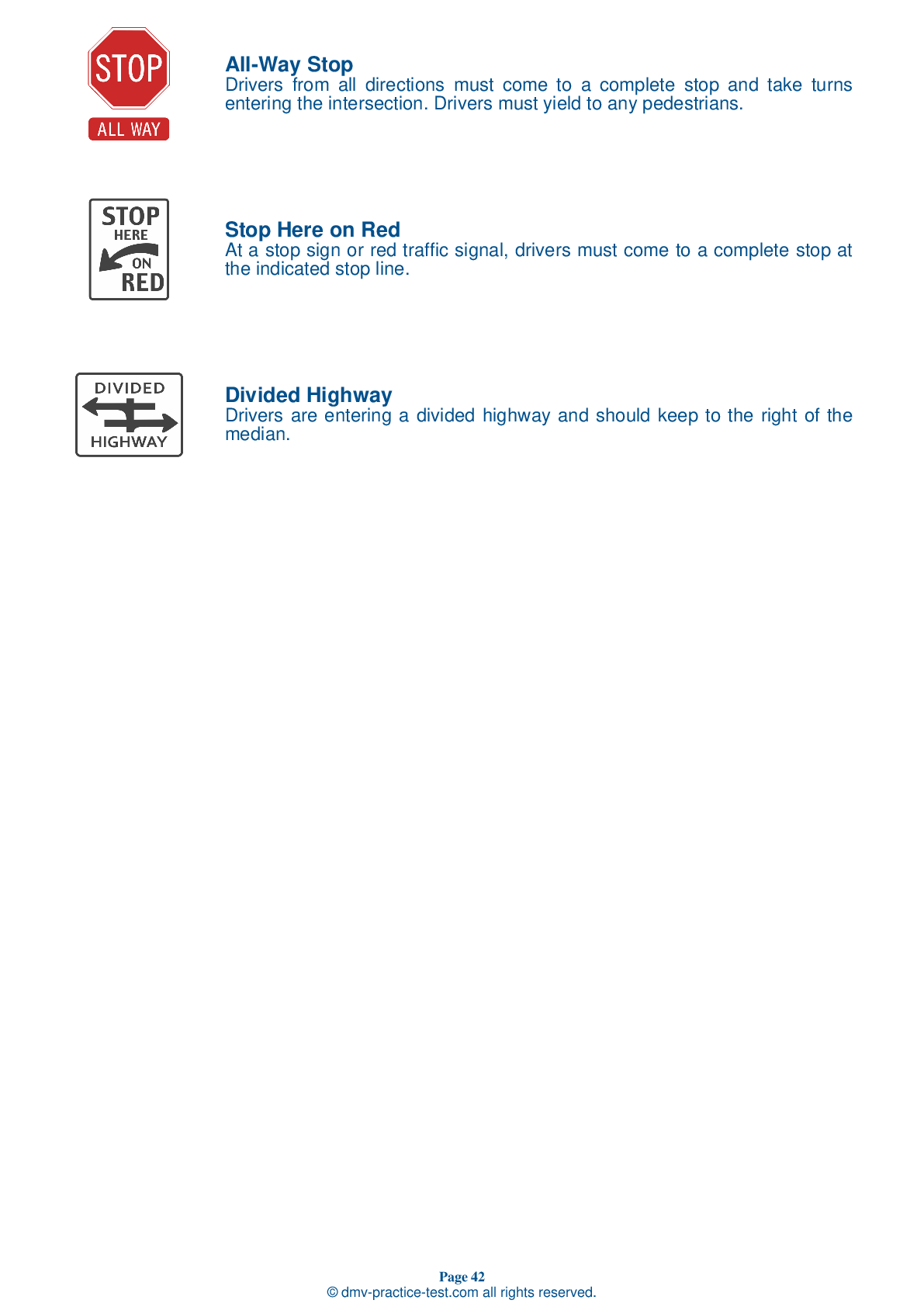Motorcycle Test | License ID 2026 | FREE Online Practice! #10 Page 4 of 4
Take this FREE motorcycle test (license in ID 2026) to check your knowledge of the road rules. To improve your results, download a motorcycle handbook online, study theory, and practice for free on our website. Still worried about how to get a motorcycle license in Idaho in 2026? Check our website for more sample tests, train as much as possible, and boost your grades!
19 . To increase your line of sight when preparing to pass another vehicle on its left, you should:
When preparing to pass another vehicle on its left, you should ride in the left portion of your lane. This will increase your line of sight and make you more visible to oncoming traffic.
20 . When riding behind a car, traveling in the left third of the lane allows the driver to see you in their side mirror. What is a downside to this?
Most drivers do not look at their side mirrors as often as they look at their rearview mirror. Therefore, when following a car, it is generally most advantageous to ride in the center portion of the lane where you are most likely to be visible in the driver's rearview mirror.
22 . Which of the following surfaces is unlikely to provide poor traction for motorcyclists?
A number of surfaces can provide poor traction for tires. Wet pavement; roads covered in loose gravel or sand; muddy, snowy, or icy areas; painted lane markings; and metal covers and plates in the road can be more hazardous for a motorcyclist than dry pavement.
23 . When sitting on a motorcycle, you should:
Sit with a posture that allows you to use your arms to control your motorcycle. You should not be positioned in a way that requires your arms to prop up your body and support your weight.
24 . Each traffic lane gives the motorcyclist how many paths of travel?
Each traffic lane provides three paths of travel for motorcyclists: the left, center, and right portions of the lane.
25 . When braking, you should:
To brake, squeeze the front brake lever and press down on the rear brake pedal. Always use both brakes when slowing or stopping.
See the exact questions that will be on the 2026 Idaho DMV exam.
99.2% of people who use the cheat sheet pass the FIRST TIME
Jeneen was tired of paying $5/gallon. She got herself a scooter that required the motorcycle license. She studyed the motorcycle test cheat sheet and passed her test the next day!
Christopher tells us how he knew nothing prior to obtaining the motorcycle study guide, and he only got one question wrong because he clicked on the wrong answer by mistake.



